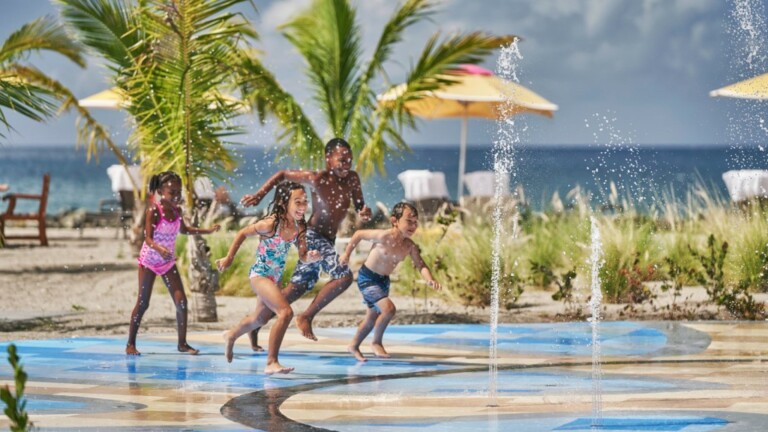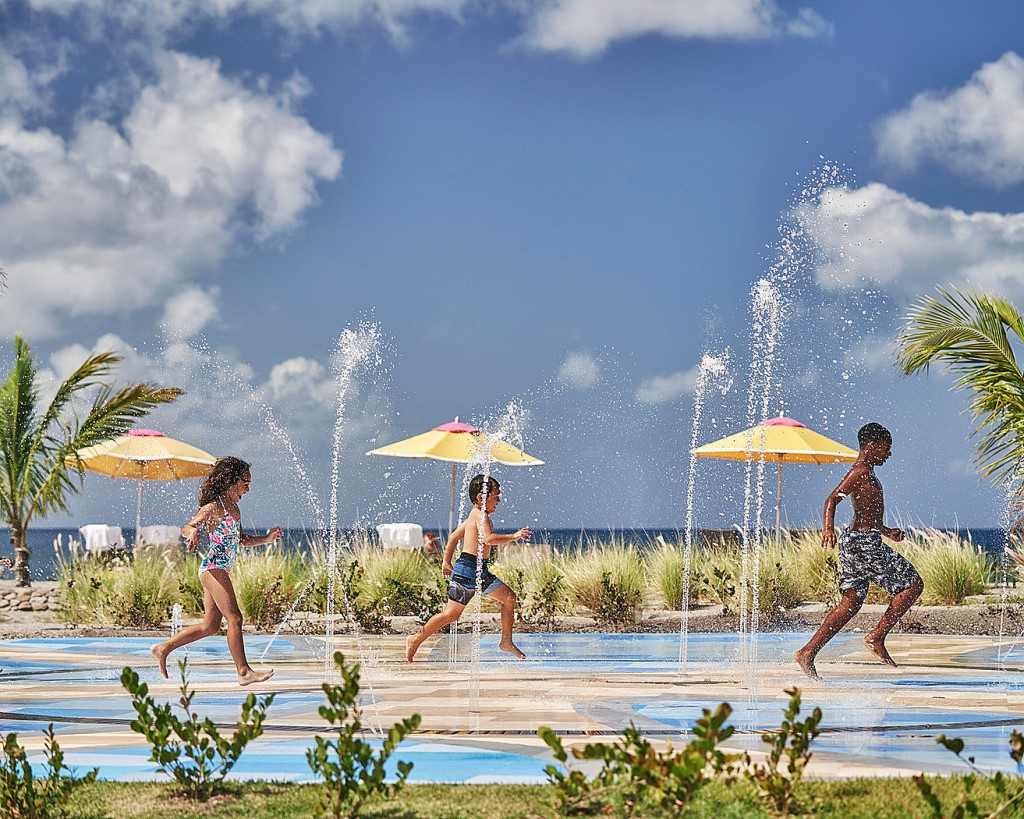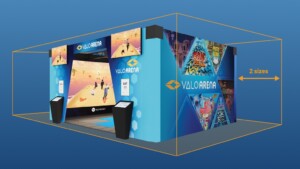Cloward H2O, an expert in aquatic design, has been looking at some of the key considerations in the successful design of splash decks, with a particular focus on how they can be developed to best suit coastal environments.
Brad Clawson, associate engineer, has shared his expertise and discussed the design, construction, and maintenance of this type of attraction.
“Splash decks have become very popular. “Their appeal is universal across all age groups and demographics. If properly designed, they do not require supervision or barriers, which makes them very operationally friendly,” Clawson says.
Maintenance considerations
Whilst well-designed splash decks are operationally efficient, they do pose some maintenance challenges. Excellent water quality must be maintained, all features need to be durable and difficult to destroy or damage, and there must be no safety risks, such as trip hazards.
In addition, if located in a coastal area then the splash deck needs to withstand the challenges of a salt spray environment and the constant addition of sand.
“Fortunately, none of these challenges are difficult to overcome if they are planned for and the facility is properly designed,” says Clawson. “Water quality can be easily maintained in pristine condition with the proper system.
“Water should be recirculated and treated to minimize water use. A complete system with full filtration and chemical control is essential. Turnover times should be kept under a maximum of 30 minutes.”
Splash decks may also require a Secondary Disinfection System (SDS) based on local codes. An SDS, most commonly in the form of Ozone and UV, works alongside chlorine to eliminate waterborne pathogens and chloramines.
Splash deck materials should be sturdy, long-lasting, and challenging to break or deface. Operators should consider the environment in which they will be installed when selecting features for their installation.
“A splash deck in a supervised or controlled access venue such as a waterpark or hotel facility will allow for items such as slides, play structures, and other vertical equipment that can be climbed on. A splash deck in an uncontrolled environment, such as a park or public pedestrian area should have features that are ground mounted or that are not intended for, or are conducive to, climbing.
“Materials selection is also very important considering the expected use as well as any potential risks associated with installing certain materials, such as those associated with vandalism. Decks should be of durable and impervious material such as concrete. In some cases, a soft deck will be desired. Spray and play features should be of durable metals such as stainless steel or bronze. Gratings should be of durable fibreglass, bronze, stainless steel or other strong and durable material.”
Challenges of coastal locations
When selecting deck equipment for coastal locations, salt spray is a vital consideration. Mild steel, even if galvanised, is prone to corrosion in moist and salty environments, whereas materials like stainless steel, bronze, and fibreglass are highly durable in such locations.
In this setting, mechanical equipment needs to be placed in a secure enclosure or service area away from public and environmental hazards and many high-quality and reliable equipment options are available.
In addition, Clawson outlines ways of managing sand entering the system.
“It is quite probable that many people will consider a splash deck by the coast to be a public foot bath to rinse the sand off of their feet. If project stakeholders accept that this will in fact be the case, it can be designed for and prevented from becoming a significant problem.
“In order to prevent this from being a problem, it is imperative to design the deck to send the sand to a specific location and then collect and remove it. Deck slopes need to be carefully considered so that water drains freely to the drain systems and is not permitted to go anywhere else.
“The drains must be designed with sand traps in the bottom to minimize the amount of sand that gets in the piping. Any sand that does get into the piping will flow into the required balance tank for the system.”
Drain pipes will enter the balancing tank at the opposite end to the pump suction lines. A baffle wall is installed at this entry point to catch any remaining sand, and both the baffle area and the drain sand traps can be easily cleared. This design approach makes it easy to maintain the splash deck and prevents difficulties that may occur in sandy environments.
“To conclude, splash decks are great features,” says Clawson. “They are very popular and offer an opportunity to bring a fun, enjoyable, and interactive feature to a public space. Proper design and construction will allow the operator to effectively maintain the facility and keep the feature in good operation for many years.”
Earlier this month, Cloward H2O discussed the important topic of breakpoint chlorination.
















